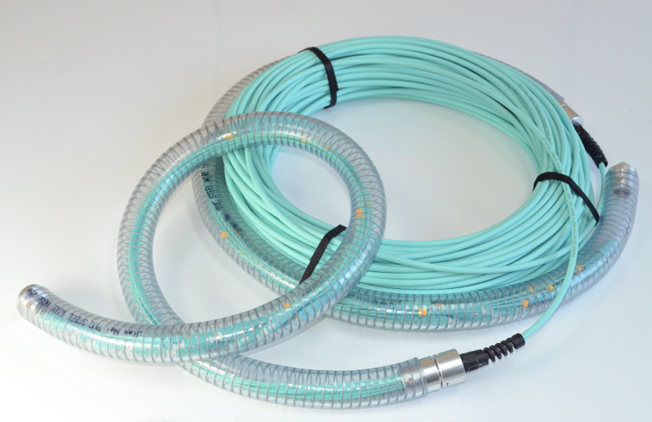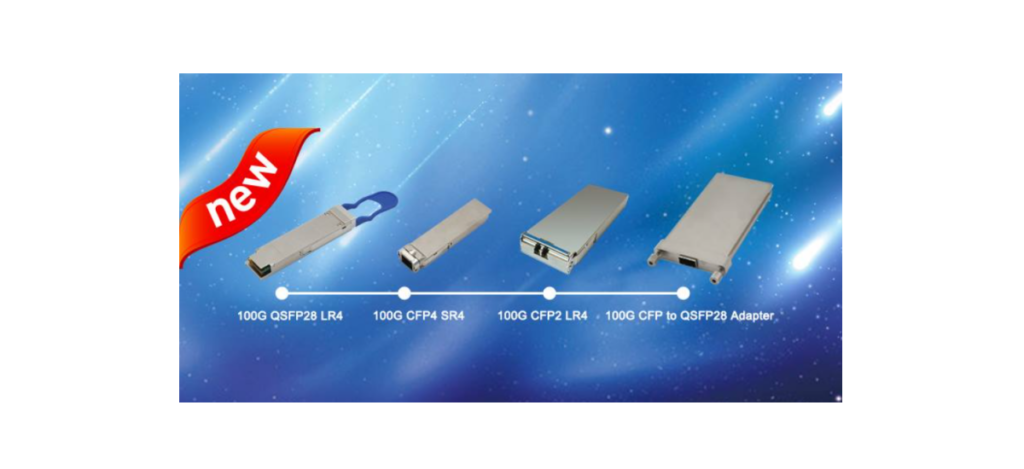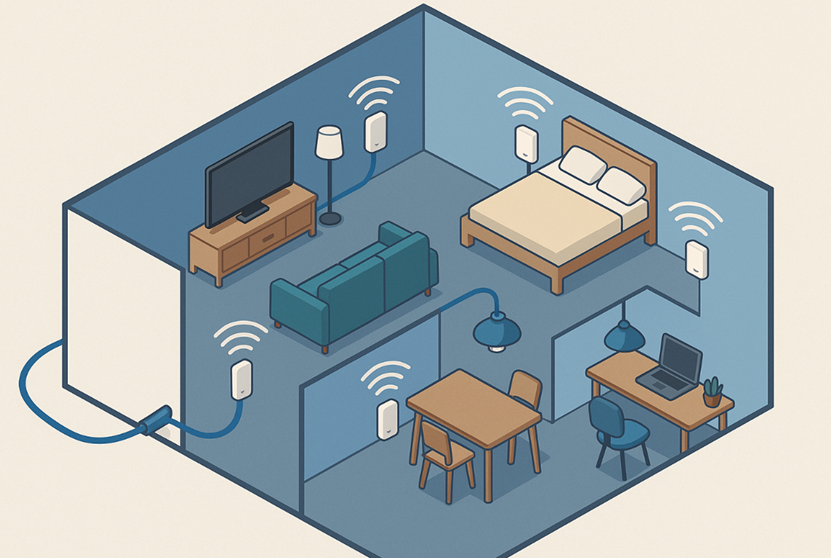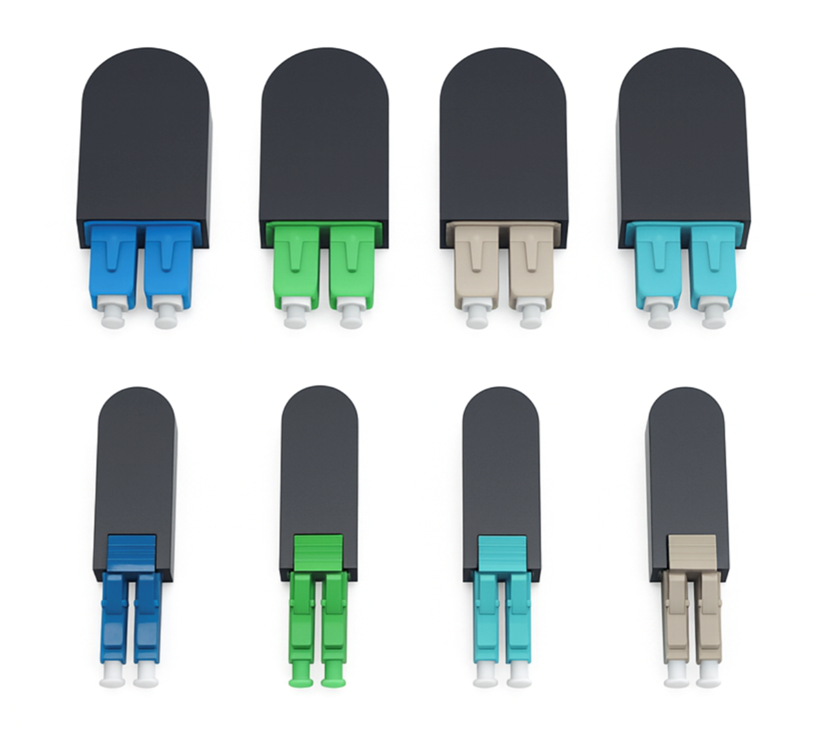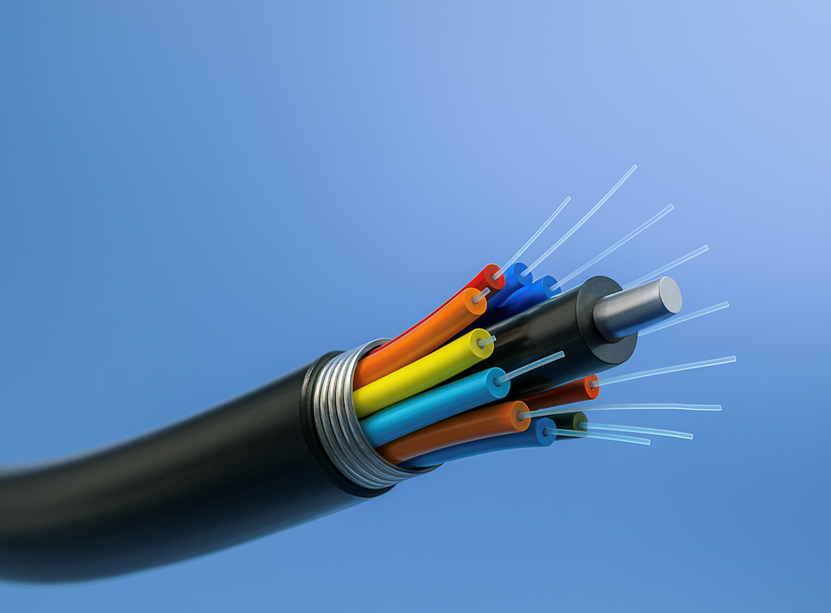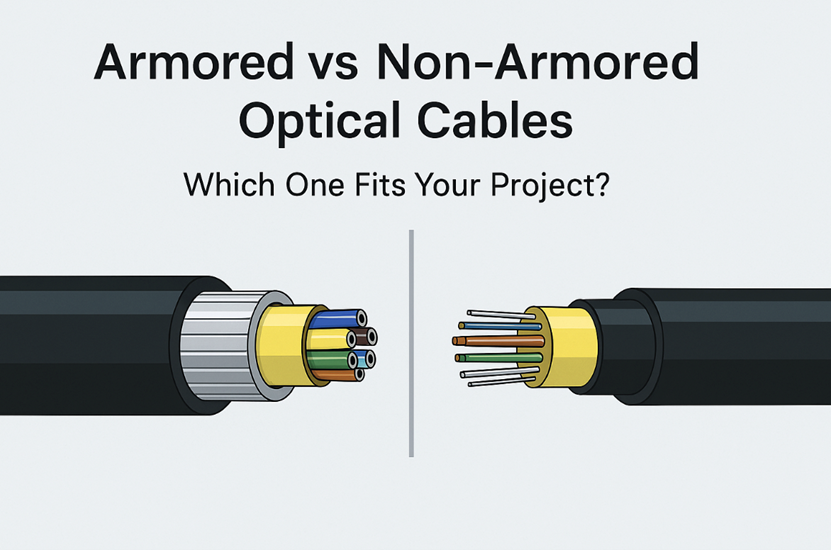In the digital age, fiber networks are indispensable for high-performance communication, offering unparalleled benefits over traditional copper infrastructure. We’ll discuss the importance of optimizing your fiber network infrastructure and explore the various technologies that enable faster connections in this blog.
What is Fiber Network Infrastructure?
Fiber network infrastructure refers to the physical framework of fiber-optic cables, connectors, and related equipment that form the backbone of modern telecommunications systems. These cables transmit data using pulses of light, allowing for high-speed and high-capacity communication. Fiber network infrastructure supports various digital services, including internet access, telephone, television, and enterprise networking. It plays a crucial role in enabling fast, reliable, and secure connectivity for businesses, governments, educational institutions, and individuals worldwide.
What is the Fastest Type of Fiber Network?
The fastest type of fiber network commonly available today is typically referred to as “fiber-to-the-home” (FTTH) or “fiber-to-the-premises” (FTTP). This type of network delivers high-speed internet directly to individual homes or businesses using fiber-optic cables. FTTH/FTTP networks offer unparalleled speeds and reliability compared to traditional copper-based networks like DSL or cable internet. With FTTH/FTTP, users can experience symmetrical upload and download speeds, often reaching gigabit speeds (1,000 Mbps or higher), making it the fastest and most efficient type of network for internet connectivity.
What are the Components of Fiber Network Infrastructure?
Fiber-optic Cables: These are the backbone of the network, composed of thin strands of glass or plastic fibers that transmit data as pulses of light. These cables are highly durable and capable of carrying large amounts of data over long distances with minimal signal loss.
Optical Transceivers: These devices convert electrical signals into light signals for transmission over fiber optic cables, and vice versa. They are widely deployed in switches, routers, and various other network devices to enable efficient communication over fiber optic networks.
Fiber-optic Switches: These network devices enable the routing of data traffic between different segments of the fiber network. They manage the flow of data by directing signals to their intended destinations, ensuring efficient communication within the network.
Fiber-optic Couplers and Splitters: Couplers combine optical signals from multiple fibers into a single fiber, while splitters divide optical signals into multiple paths. These components facilitate the distribution and sharing of optical signals within the network, enabling efficient utilization of network resources.
Fiber-optic Patch Panels: These panels provide a centralized point for terminating and organizing fiber-optic cables within a network infrastructure. They facilitate easy management and maintenance of cable connections, allowing for quick identification and troubleshooting of issues.
Splice Closures: Splice closures are protective enclosures used to house and protect the spliced ends of fiber-optic cables where connections are made. They safeguard the delicate fibers from environmental factors such as moisture, dust, and physical damage.
Network Equipment: This includes routers, switches, firewalls, servers, and other devices that facilitate data communication and network management.
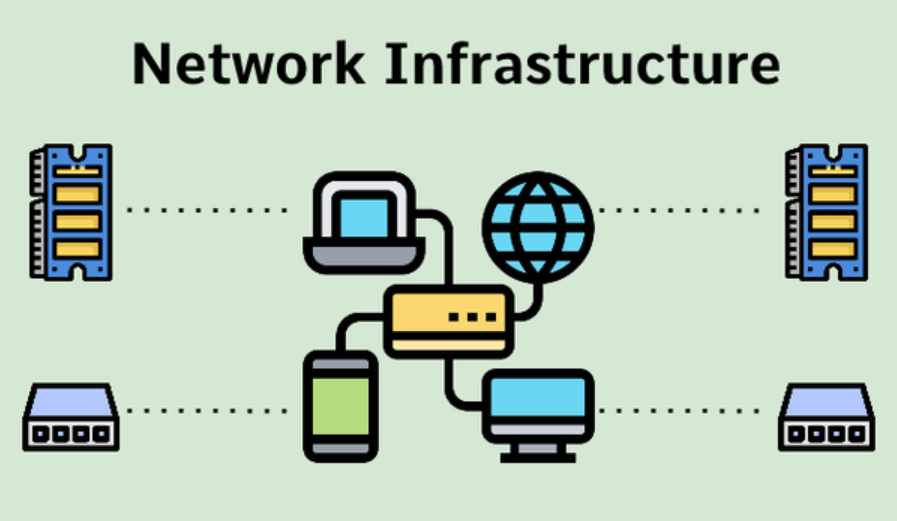
How Fiber Optic Infrastructure Works?
Fiber optic infrastructure works by transmitting data through pulses of light along thin strands of glass or plastic fibers. Here’s how it operates:
Data Transmission: Fiber optic cables carry data in the form of light pulses. These pulses are generated by devices called optical transmitters, which convert electrical signals from network equipment into optical signals suitable for transmission over the fiber optic cables.
Propagation of Light: Once the optical signals are generated, they travel through the fiber optic cables via internal reflection. The core of the fiber, where the light travels, has a higher refractive index than the cladding surrounding it. This causes the light to reflect off the boundary between the core and the cladding, allowing it to propagate down the length of the fiber.
Reception of Light: At the receiving end of the fiber optic link, optical receivers detect the incoming light pulses. These receivers convert the optical signals back into electrical signals, which can then be processed by network equipment.
Signal Integrity: Fiber optic cables are designed to minimize signal loss and distortion over long distances. This is achieved through various means, including the use of high-quality materials, precise manufacturing techniques, and signal amplification using optical amplifiers when necessary.
Connectivity: Fiber optic connectors are used to join fiber optic cables together or to connect cables to network equipment. These connectors ensure secure and reliable connections, allowing for efficient transmission of data between different components of the fiber optic infrastructure.
Routing and Management: Fiber optic switches and other network devices manage the flow of data within the fiber optic infrastructure. They route data traffic between different segments of the network, ensuring that information is delivered to its intended destination in a timely and efficient manner.
Maintenance and Monitoring: Fiber optic infrastructure requires regular maintenance and monitoring to ensure optimal performance. This includes activities such as inspecting and cleaning fiber optic connectors, testing signal quality, and troubleshooting any issues that may arise.

How to Build Network Infrastructure?
To construct a network infrastructure, you can adhere to these general steps:
Planning and Design: Establish the network’s prerequisites, such as device count, data transfer speed, and coverage area. Take into account scalability, security, and future expansion. Develop a network blueprint that encompasses cable layout, network switches, routers, firewalls, and other essential hardware. Consider elements like cable pathways, connectivity choices, and network segmentation.
Procurement of Equipment: Purchase the necessary networking hardware, including switches, routers, firewalls, servers, and fiber optic cables. Ensure compatibility and equipment quality.
Installation: Physically deploy the networking hardware, which includes laying fiber optic cables, setting up network switches, and connecting devices. Adhere to cable management best practices and ensure proper grounding and power supply.
Configuration: Configure the network devices in line with your design specifications, covering aspects like IP addressing, routing protocols, security settings, and quality of service (QoS) parameters.
Testing and Optimization: Perform comprehensive testing to confirm connectivity, performance, and security. Fine-tune configurations, monitor network traffic, and address any identified issues or bottlenecks to optimize the network.
How to Optimize Fiber Optic Network Infrastructure for Faster Connections?
Fiber optic networks offer incredibly fast and reliable connectivity, but optimizing the infrastructure is crucial to achieving maximum performance. Here are some techniques for optimizing fiber network infrastructure:
Upgrade Equipment: Enhancing network equipment like switches, routers, and optical amplifiers can significantly boost network capacity and data transfer rates. Newer equipment with higher capacity and faster speeds can handle increased traffic and reduce latency. It’s important to ensure compatibility with existing infrastructure and plan for future expansion when upgrading equipment.
Reduce Signal Interference: Signal interference can degrade the quality of fiber optic cables and affect network performance. Shielding fiber optic cables from electromagnetic interference and installing them in weather-resistant conduits can help reduce signal interference. Additionally, using single-mode fibers instead of multi -mode fibers can decrease signal attenuation and improve signal quality.
Implement Wavelength Division Multiplexing (WDM): Wavelength Division Multiplexing is a technique that enables multiple wavelengths to be transmitted over a single fiber optic cable. This increases network capacity and reduces latency by allowing more data to be transmitted simultaneously. WDM is particularly effective for networks with high bandwidth requirements.
Network Monitoring and Maintenance: Regular monitoring and maintenance of the network can identify and address issues such as signal interference, network congestion, and equipment failures. This leads to improved network performance and decreased downtime. Monitoring also helps identify potential issues before they escalate, enabling proactive maintenance and upgrades.
Factors Influencing Fiber Network Infrastructure
Fiber optic networks offer a reliable and efficient means of data transmission, but their performance can be influenced by various factors. Understanding these factors is essential for network administrators to optimize connectivity speed. Here are some critical factors affecting fiber network infrastructure:
Bandwidth Capacity: The bandwidth capacity of a fiber optic network determines the volume of data it can transmit. Factors like the number of fiber strands, data transfer rates, and transmission distance affect bandwidth capacity. Networks with more fiber strands, higher data transfer rates, and shorter distances between endpoints have greater bandwidth capacity. This ensures faster data transfer and connectivity.
Latency: Latency refers to the delay between data transmission and reception. It is influenced by network topology, distance between endpoints, and data transfer protocols. Data passing through multiple nodes or switches and longer distances can increase latency. Additionally, the choice of data transfer protocols, such as TCP or UDP, can impact latency. Minimizing latency improves connectivity speed and quality, enhancing the user experience.
Signal Interference: Signal interference can degrade the quality and reliability of fiber optic networks, leading to slower connectivity and data transfer rates. External factors like weather conditions and electromagnetic interference, as well as network congestion, can cause signal interference. Identifying and mitigating sources of Interference is essential for maintaining optimal network performance.
Network Congestion: Network congestion occurs when traffic exceeds the network’s capacity, resulting in slower connectivity and data transfer rates. While fiber optic networks are designed to handle high volumes of traffic, unexpected spikes can lead to congestion. Inadequate network infrastructure and management practices can also contribute to congestion. To optimize the network, administrators must identify congestion points and implement measures such as infrastructure upgrades, traffic management policies, and topology optimization.
Future Trend
The evolution of fiber network infrastructure has been swift, promising a bright future. With continuous advancements in fiber optic technology, faster connectivity and increased bandwidth capacity are on the horizon.
Advancements in Fiber Optic Technology: The pace of innovation in fiber optic technology is remarkable, with breakthroughs occurring in cable design, signal processing, and network architecture. Among these innovations is the emergence of multicore fibers, capable of transmitting multiple data streams simultaneously, thereby boosting network bandwidth capacity. Researchers are also focused on mitigating signal loss over long distances through advanced signal processing techniques that compensate for attenuation, enhancing overall network performance.
Impact on Connectivity and Speed: The future of fiber optic technology holds promise for accelerated connectivity and data transfer rates. With enhanced bandwidth capacity, large volumes of data can be transmitted in real-time, facilitating seamless communication, streaming, and gaming experiences. This technological advancement is poised to empower businesses with the ability to harness big data for informed decision-making, gaining a competitive advantage in the process.
Potential Applications: Fiber optic technology presents numerous potential applications across various sectors, including telecommunications, healthcare, transportation, and urban development. For instance, in healthcare, fiber optic networks enable real-time transmission of medical data and images, facilitating remote diagnosis and treatment . In transportation, these networks enhance traffic management, reduce accidents, and facilitate vehicle-to-vehicle communication. In smart city initiatives, fiber optic infrastructure supports the implementation of efficient and sustainable systems such as smart lighting, waste management, and energy distribution.

Conclusion:
As fiber optic technology continues to advance, we can expect faster connections, higher bandwidth capacity, and innovative applications in different industries. As we move towards a digital future, investing in and optimizing fiber optic network infrastructure is critical to facilitate better communications and connectivity.


